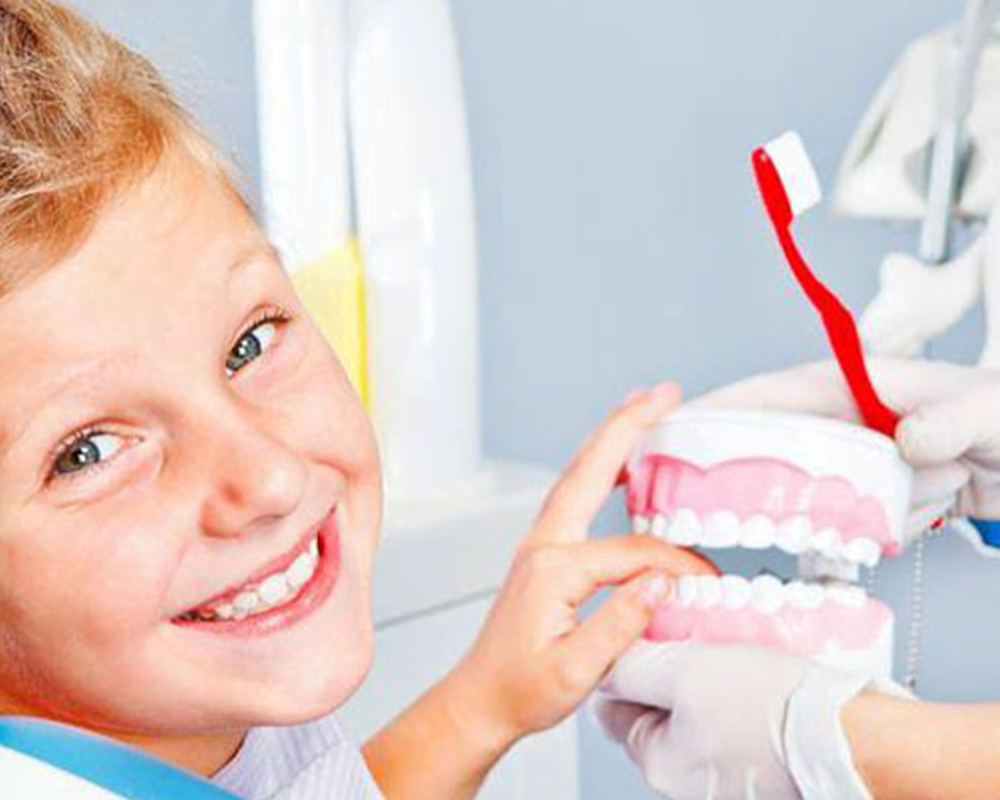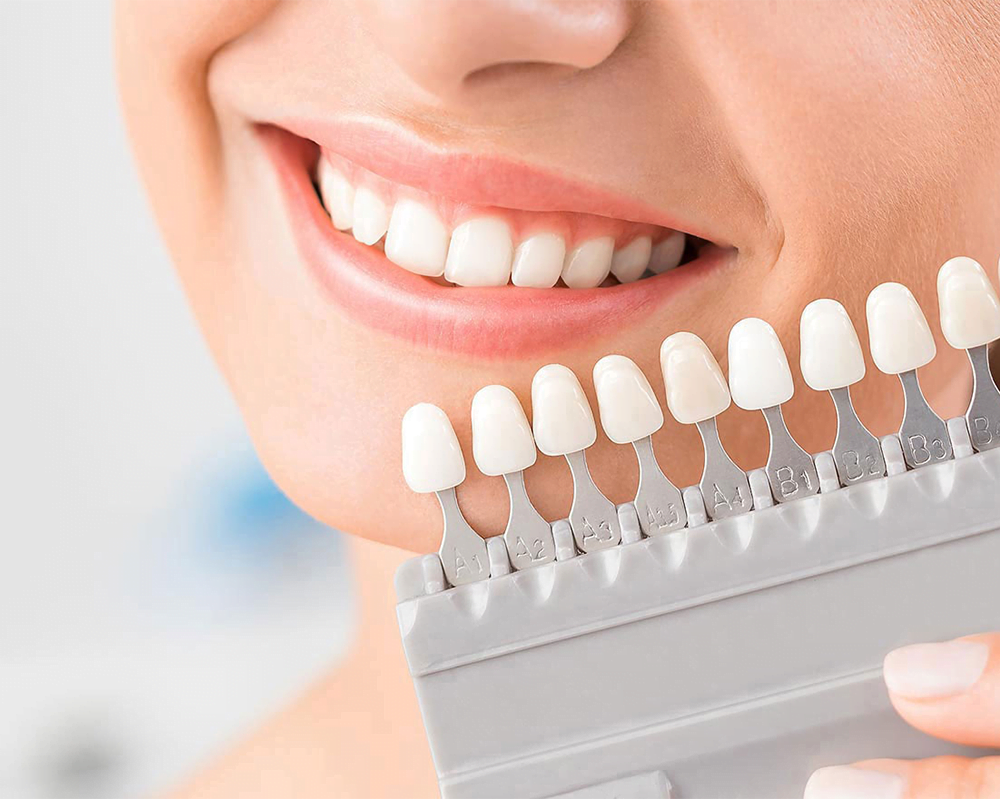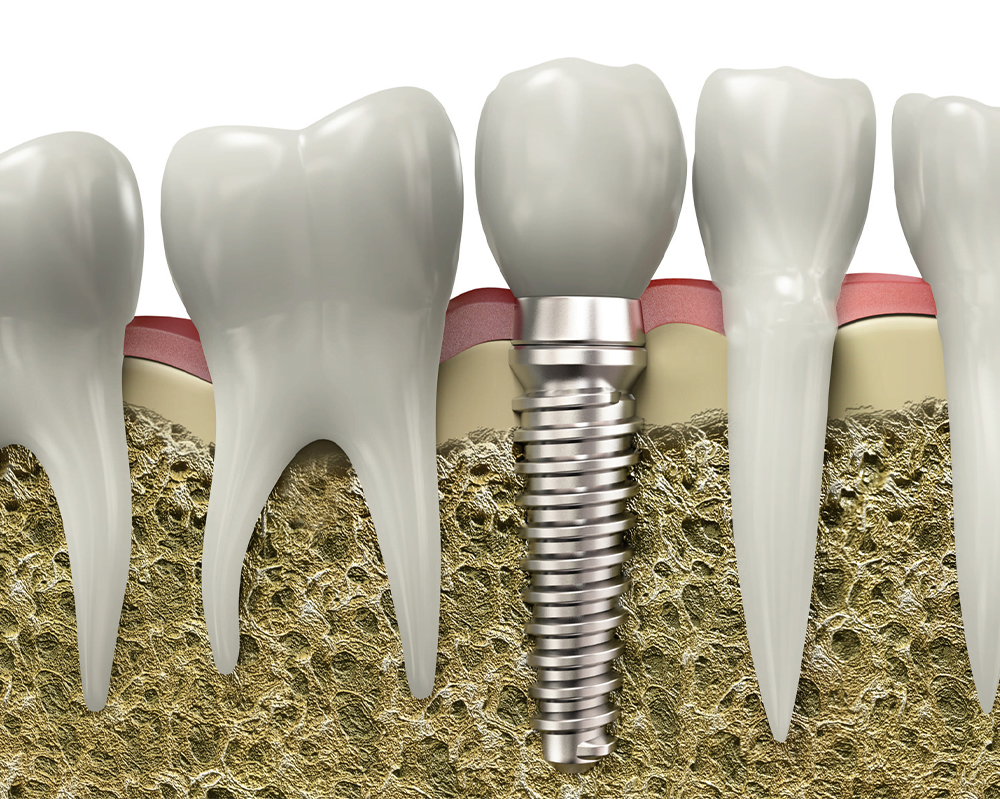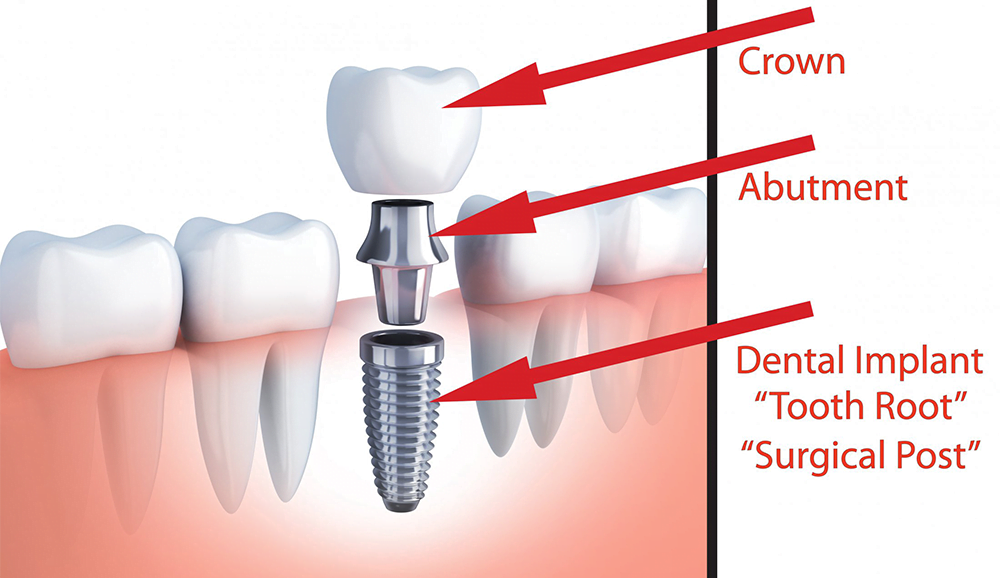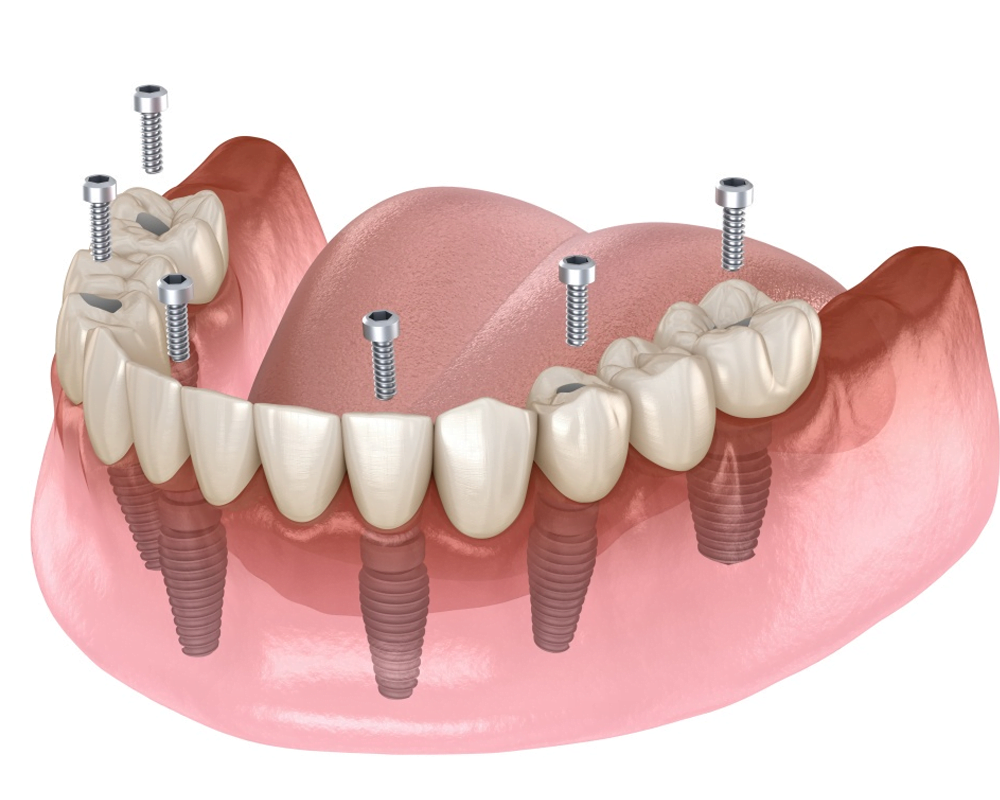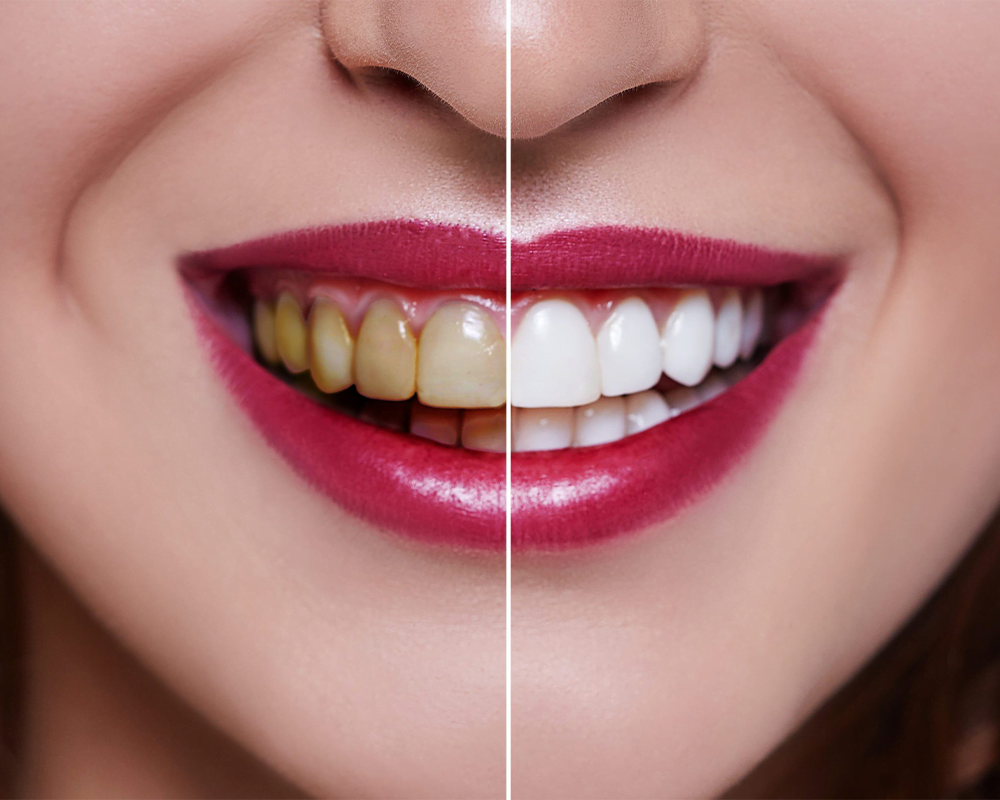
Over time, your teeth can become stained or discolored mainly from dark foods (soy sauce and curry), dark drinks (tea, coffee and red wine) and not least from tobacco products. If you have stained and discolored teeth, teeth whitening could be the answer.
Today, many of our patients request teeth whitening. As your smile is one of the most expressive parts of your face, it has become one of the most requested cosmetic procedures. If you are self-conscious about the look of your smile, especially the color of your teeth, teeth whitening may be the boost you need.
Teeth whitening can be a stepping-stone for a renewed commitment to oral hygiene. Many people choose to maintain their bright new smile with diligent brushing and flossing.
There are basically two types of teeth bleaching/whitening ;
Home bleaching & In-Office bleaching.
Home Bleaching
The most popular teeth bleaching/whitening technique involves having a dentist make a clear plastic tray in which the bleaching gel is placed. These custom trays are made to fit your teeth precisely. Therefore, the maximum bleaching effect can be reached with the minimum amount of bleaching gel.
The gel is kept on the teeth for 90 minutes a day for up to a week. The results of this treatment are often dramatic, and the more days you use the gel the lighter your teeth become.
In-Office Bleaching
This technique is popular as the bleaching is done during one or two appointments. With in-office bleaching we use a much higher concentration, and another type of bleaching gel. Some patients feel that the long-term effect is better with home bleaching as they can do touch-ups for a day or two whenever they need.
During the in-office bleaching, a whitening gel is placed on your teeth. To activate the bleaching gel, a plasma light (a very intense blue light) is focused on the gel. The light helps break down stains on your teeth.
White and shiny teeth are a valuable asset to our self-image. A beautiful smile adds to our charm and self-confidence, is a requirement of modern times and shows our care for our aesthetics.
A teeth whitening system is required to be above all effective, completely safe, convenient, and deliver immediate results. That is exactly how the ZOOM whitening system works. Tests have shown that teeth whitening using this method improves the colour of the teeth between 5 to 14 shades (according to VITA scale), and the effects are most definitely better than those obtained using other whitening systems. The procedure lasts only 30 minutes, and is a one-time treatment with no side effects. The usage of low temperature and cold light eliminates nerve irritation. ZOOM Whitening System is regarded to be the safest and most effective way of teeth whitening available on the market. Another method we offer at our clinic is the home whitening system, addressed to patients who are not ready to spend 30 minutes in the dental chair but appreciate a white and bright smile. Patients who choose this system have their dental arch impressions taken by the dentist in order to construct a precise and tight custom – made whitening tray construct. The sealing of these trays is one of the most important factors determining the effects of this whitening method. The whitening trays are individually prepared in our laboratory by our dental technicians using a thermoforming method at the pressure of 3 atm, which guarantees their absolut sealing.

ZOOM Teeth Whitening is a one-time procedure involving a special whitening gel being painted on the teeth and then activated by the light of the accelerator. The active agent of the whitening gel is hydrogen peroxide, while other ingredients are included to enhance the results of the procedure, and to diminish sensitivity. In the presence of light emitted by the ZOOM accelerator, whitening gel can pass more quickly through the enamel into the dentin. The light speeds up the whitening process as it increases the decomposition rate of hydrogen peroxide molecules. This leads to a rapid oxidizing reaction within the structure of the tooth, resulting in visible discolorations breaking down and oxidizing. The effect is instantly visible – white, gleaming teeth. The whole procedure lasts about 45 minutes, the total time amount may vary depending on the condition of the teeth.
The ZOOM treatment is completely safe and performed by a dental professional. When whitened, the teeth will not absorb further pigments, and the results can last for an average of 2-3 years, depending largely on the patient’s lifestyle.
The hydrogen peroxide – based ZOOM whitening gel oxidizes discolouration that is present in the structure of the tooth. The reaction that occurs during the procedure is innocuous and does not differ from similar treatments that have been administered by cosmetic dentists for many years. It is only the advanced formula of the gel and the light emitted by the ZOOM accelerator that make it possible to reduce the duration of the reaction to merely 24-45 minutes, while the obtained outcomes excel those of other methods.
The ZOOM Technology system is currently used in over 100 countries around the world, and hundreds of people a day are subject to this treatment. The safety of the ZOOM whitening method has been confirmed by the absence of any complications.
ZOOM System Whitening Treatment Stages
Stage One
Next, an assessment of the current teeth shade is performed using the VITA scale. The dentist then protects the gums with a special blue fluid resin – Blue Seal, which is cured with the ultraviolet dental curing lamp. That way the gums are secured from irritations caused by the whitening gel.
Stage Two
Next, an assessment of the current teeth shade is performed using the VITA scale. The dentist then protects the gums with a special blue fluid resin – Blue Seal, which is cured with the ultraviolet dental curing lamp. That way the gums are secured from irritations caused by the whitening gel.
Stage Three
The next two stages present the whitening procedure.
The dentist applies the ZOOM whitening gel (37 % hydrogen peroxide) to the prepared teeth using a special syringe.
The gel is applied thoroughly on the teeth’s surface and mixed so that all teeth are evenly coated.
Stage Four
The patient now receives special goggles for protection against ultraviolet light emitted by the ZOOM accelerator. Cold light emitted by the accelerator, of a temperature lower than used in other similar devices, increases the comfort and reduces teeth sensitivity. The irradiation lasts for about 30 to 40 minutes with intervals every 10 minute for an additional application of the whitening gel. After the whitening, the gel is removed with an ejector. The end result is then evaluated using the VITA shade guide. The final assessment is performed during a follow-up visit after two weeks. During that time, the consumption of pigmented foods and beverages is not recommended.




